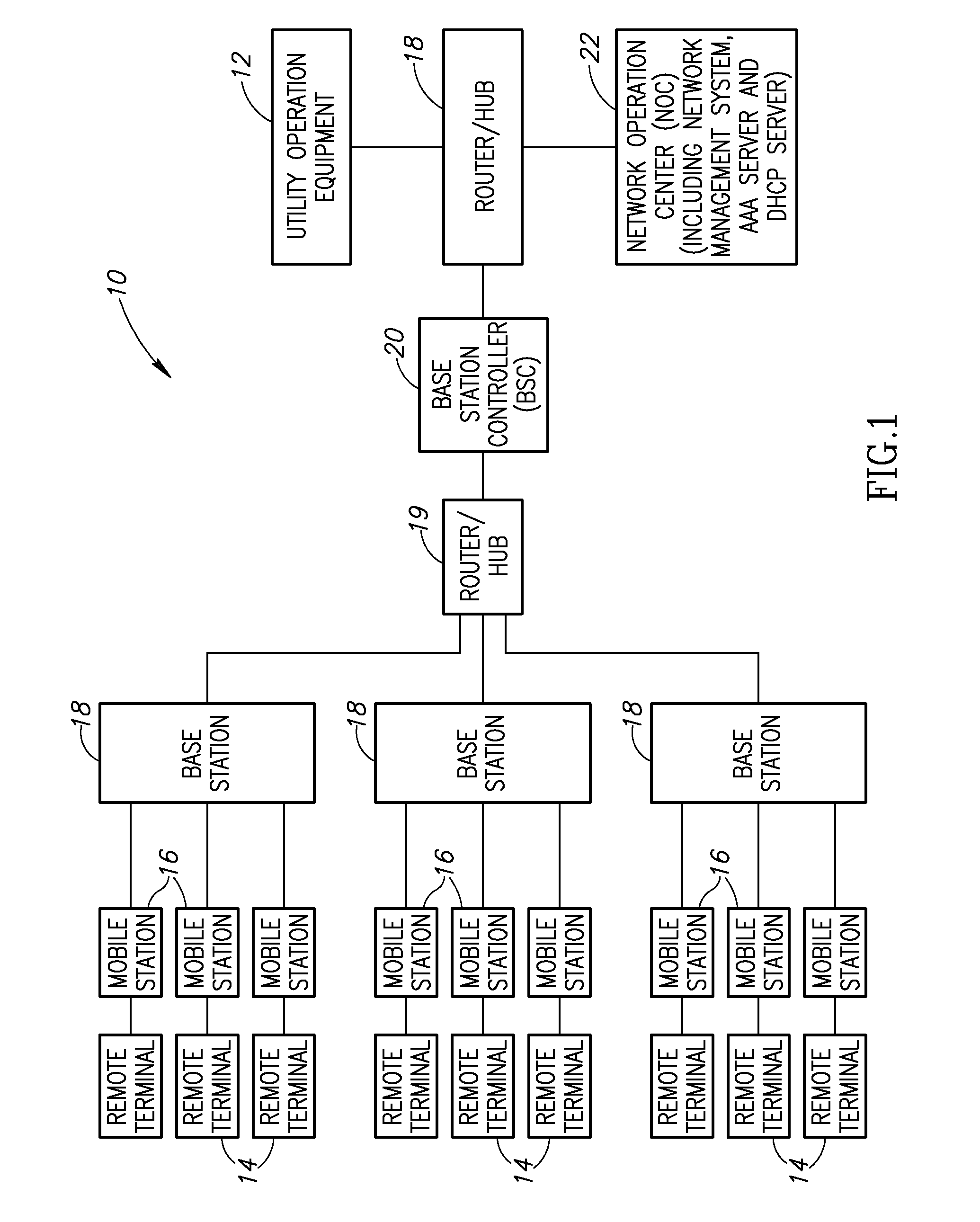Wimax based point to multipoint system operating in frequencies below 1 ghz
- Summary
- Abstract
- Description
- Claims
- Application Information
AI Technical Summary
Benefits of technology
Problems solved by technology
Method used
Image
Examples
Embodiment Construction
[0063]The present invention relates to a mobile WiMAX (Worldwide Interoperability for Microwave Access) based system, operating in frequencies below 1 GHz.
[0064]Reference is now made to FIG. 1, which is a schematic illustration of an IEEE802.16-e based, PtMP wireless system, generally designated 10, operating over licensed bands below 1 GHz, according to an embodiment of the present invention.
[0065]The system communicates between Utility Operation Equipment 12 and a plurality of Remote Terminals (RTs) 14, which may be connected to Mobile Stations (MS) / fixed Subscriber Stations (SS) 16. The system implements the transmission method of the present invention described hereinbelow, for communicating between the BSs 18 and the MSs / SSs 16. The Utility Operation Equipment 12 has a data connection (via a Router / hub 18) to the optional Base Station Controller (BSC) 20. The BSC 20 serves as the system's central data hub and controller.
[0066]The BSC 20 implements the functionality of an ASN Ga...
PUM
 Login to View More
Login to View More Abstract
Description
Claims
Application Information
 Login to View More
Login to View More - R&D
- Intellectual Property
- Life Sciences
- Materials
- Tech Scout
- Unparalleled Data Quality
- Higher Quality Content
- 60% Fewer Hallucinations
Browse by: Latest US Patents, China's latest patents, Technical Efficacy Thesaurus, Application Domain, Technology Topic, Popular Technical Reports.
© 2025 PatSnap. All rights reserved.Legal|Privacy policy|Modern Slavery Act Transparency Statement|Sitemap|About US| Contact US: help@patsnap.com



